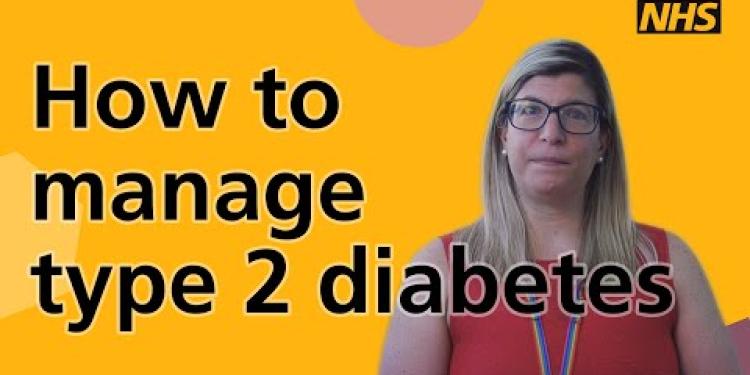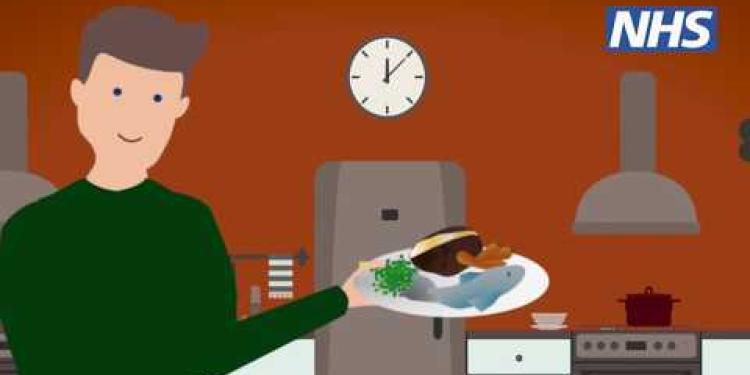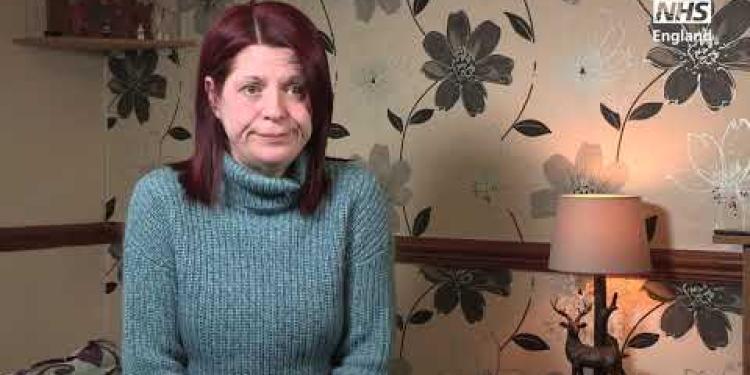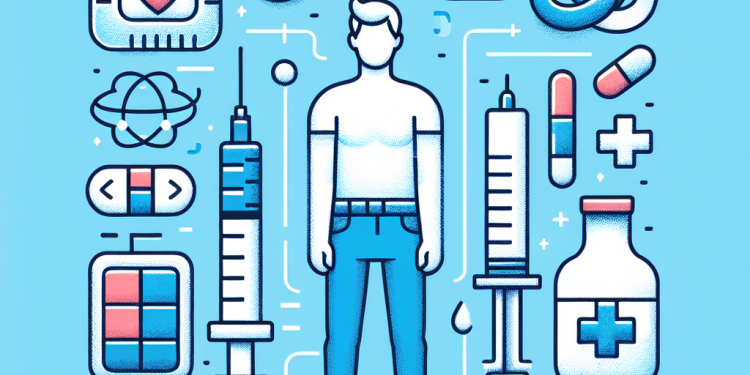Important Information On Using This Service
- Ergsy carefully checks the information in the videos we provide here.
- Videos shown by YouTube after a video has completed have NOT been reviewed by ERGSY.
- To view, click the arrow in the center of the video.
Using Subtitles and Closed Captions
- Most of the videos you find here will have subtitles and/or closed captions available.
- You may need to turn these on and choose your preferred language.
Turn Captions On or Off
- Go to the video you'd like to watch.
- If closed captions (CC) are available, settings will be visible on the bottom right of the video player.
- To turn on captions, click settings.
- To turn off captions, click settings again.
Find A Professional
Understanding Type 2 Diabetes - Common Signs and Symptoms
Introduction
Type 2 diabetes is a prevalent condition that affects millions of people in the United Kingdom. It often develops slowly over years, so it's important to understand the common signs and symptoms. Early detection can greatly help in managing the condition and improving quality of life. Below, we break down some of the key indicators associated with Type 2 diabetes.
Increased Thirst and Frequent Urination
One of the earliest and most common symptoms of Type 2 diabetes is increased thirst (polydipsia) and frequent urination (polyuria). This occurs because excess glucose in the bloodstream draws water from the body’s tissues, making you feel dehydrated and causing increased urination.
Unexplained Weight Loss
Unexpected weight loss can be another sign, even if you haven't changed your diet or exercise habits. When the body can't use glucose for energy, it starts breaking down muscles and fat, leading to weight reduction.
Fatigue
Feeling unusually tired or fatigued can be a symptom of Type 2 diabetes. This happens because cells are not able to effectively use glucose for energy, leaving you feeling depleted.
Blurred Vision
High blood sugar levels can cause the lenses of your eyes to swell, leading to temporary blurred vision. If left untreated, this can result in more serious eye problems over time.
Slow-Healing Sores and Frequent Infections
People with Type 2 diabetes often notice that cuts, blisters, and other wounds heal more slowly. High levels of glucose can impair blood circulation and the body's ability to heal. This also makes the body more susceptible to infections.
Numbness and Tingling
Nerve damage, known as neuropathy, can occur as a result of high blood sugar levels. This can cause a tingling sensation or numbness, especially in the hands and feet. Over time, this can lead to significant discomfort and complications.
Darkened Skin Areas
Patches of dark skin (acanthosis nigricans) may appear in body creases such as the neck, armpits, or groin. This condition can be a warning sign of heightened insulin resistance.
Conclusion
If you recognize any of these symptoms, it's crucial to consult with a healthcare professional as soon as possible. Early diagnosis and management of Type 2 diabetes can make a significant difference in maintaining your health and well-being. For more information and support, visit the official website of UHL NHS Trust.
Frequently Asked Questions
What is Type 2 diabetes?
Type 2 diabetes is a chronic condition where the body either resists the effects of insulin or doesn't produce enough insulin to maintain normal blood glucose levels.
What are the common signs of Type 2 diabetes?
Common signs include increased thirst, frequent urination, extreme fatigue, blurred vision, slow-healing sores, and unexplained weight loss.
Who is at risk of developing Type 2 diabetes?
People with a family history of diabetes, those who are overweight, have high blood pressure, lead a sedentary lifestyle, or are over the age of 45 are at higher risk.
How is Type 2 diabetes diagnosed?
It is diagnosed through blood tests, which include the HbA1c test, fasting glucose test, and oral glucose tolerance test (OGTT).
Can Type 2 diabetes be prevented?
Yes, reducing risk factors such as maintaining a healthy diet, regular exercise, and weight management can help prevent Type 2 diabetes.
What complications can arise from Type 2 diabetes?
Complications include cardiovascular disease, nerve damage, kidney damage, eye damage, foot problems, and an increased risk of infections.
What is the difference between Type 1 and Type 2 diabetes?
Type 1 diabetes is an autoimmune condition where the body attacks insulin-producing cells. Type 2 diabetes is largely due to lifestyle factors and insulin resistance.
Is Type 2 diabetes common in the UK?
Yes, it is quite common. Approximately 90% of all adults with diabetes in the UK have Type 2 diabetes.
What dietary changes are recommended for someone with Type 2 diabetes?
It is recommended to follow a balanced diet low in sugar and refined carbohydrates, high in fibre, and rich in fruits, vegetables, and whole grains.
Can Type 2 diabetes be cured?
While there is no cure, Type 2 diabetes can be managed effectively through lifestyle changes and medication, allowing individuals to lead healthy lives.
What medications are commonly prescribed for Type 2 diabetes?
Common medications include metformin, sulfonylureas, DPP-4 inhibitors, GLP-1 receptor agonists, and insulin therapy.
How often should someone with Type 2 diabetes check their blood sugar levels?
The frequency of blood sugar checks varies based on individual treatment plans but is often recommended multiple times a day for those on insulin.
What lifestyle changes can help manage Type 2 diabetes?
Key changes include eating a balanced diet, engaging in regular physical activity, maintaining a healthy weight, and quitting smoking.
Why is it important to manage blood pressure in Type 2 diabetes?
High blood pressure can worsen diabetes complications like heart disease, kidney disease, and eye problems, making it crucial to manage both conditions together.
What role does exercise play in managing Type 2 diabetes?
Regular exercise helps control blood glucose levels, reduce insulin resistance, and maintain a healthy weight, all of which are important for managing Type 2 diabetes.
Useful Links
Useful links from: Sarah and Glinys Managing Diabetes into remission Jan2019
- NHS - Type 2 Diabetes Remission Official NHS guide on managing and potentially reversing Type 2 Diabetes, providing comprehensive medical guidelines and support.
- Diabetes UK - How to Get Diabetes into Remission A page by Diabetes UK explaining how some people with Type 2 Diabetes can go into remission through weight loss and healthy lifestyle choices.
- NHS - Managing Diabetes NHS resource for managing diabetes, including tips for diet and lifestyle changes to help maintain control over blood sugar levels.
- Diabetes UK - Success Stories Personal stories from individuals managing their diabetes or achieving remission, providing inspiration and practical advice from real experiences.
Useful links from: How to inject insulin
- NHS - How to Take Insulin Official NHS guidance on the proper methods for insulin injection, including preparation, injection techniques, and site rotation.
- Diabetes UK - Injecting Insulin Diabetes UK provides detailed information on insulin injection, including step-by-step instructions, tips for minimizing discomfort, and managing injection sites.
- JDRF UK - Insulin and Needles JDRF UK offers resources and support for insulin injection techniques, including advice on types of insulin and needle selection.
- NHS Inform - Using Insulin NHS Inform provides comprehensive information on using insulin safely, including how to store insulin and handle missed doses.
Useful links from: How to manage type 2 diabetes
- NHS - Type 2 Diabetes NHS guidance on managing Type 2 diabetes, including symptoms, management, and treatment options.
- Diabetes UK - Type 2 Diabetes Diabetes UK provides comprehensive information on Type 2 diabetes, tips for management, and support resources.
- Diabetes UK - Food Choices Advice from Diabetes UK on making healthy food choices for managing Type 2 diabetes effectively.
- NHS - Diabetes Care Plan NHS details on creating a diabetes care plan including regular check-ups and setting health goals.
Useful links from: Tom's story (NHS Diabetes Prevention Programme)
- NHS Diabetes Prevention Programme Official NHS page detailing the Diabetes Prevention Programme, including the story of Tom and resources available to prevent Type 2 diabetes.
- Diabetes UK National charity providing information, support, and advice for those affected by diabetes, including prevention tips and personal stories like Tom's.
- British Heart Foundation: Diabetes Resource from the British Heart Foundation offering information on how diabetes can affect your heart health and ways to prevent it, featuring personal stories.
- NHS - Live Well: Diabetes NHS Live Well section focusing on diabetes prevention with advice, tips, and real-life stories to motivate and guide you.
Have you found an error, or do you have a link or some information you would like to share? Please let us know using the form below.
- Ergsy carfully checks the information in the videos we provide here.
- Videos shown by Youtube after a video has completed, have NOT been reviewed by ERGSY.
- To view, click the arrow in centre of video.
- Most of the videos you find here will have subtitles and/or closed captions available.
- You may need to turn these on, and choose your preferred language.
- Go to the video you'd like to watch.
- If closed captions (CC) are available, settings will be visible on the bottom right of the video player.
- To turn on Captions, click settings .
- To turn off Captions, click settings again.




